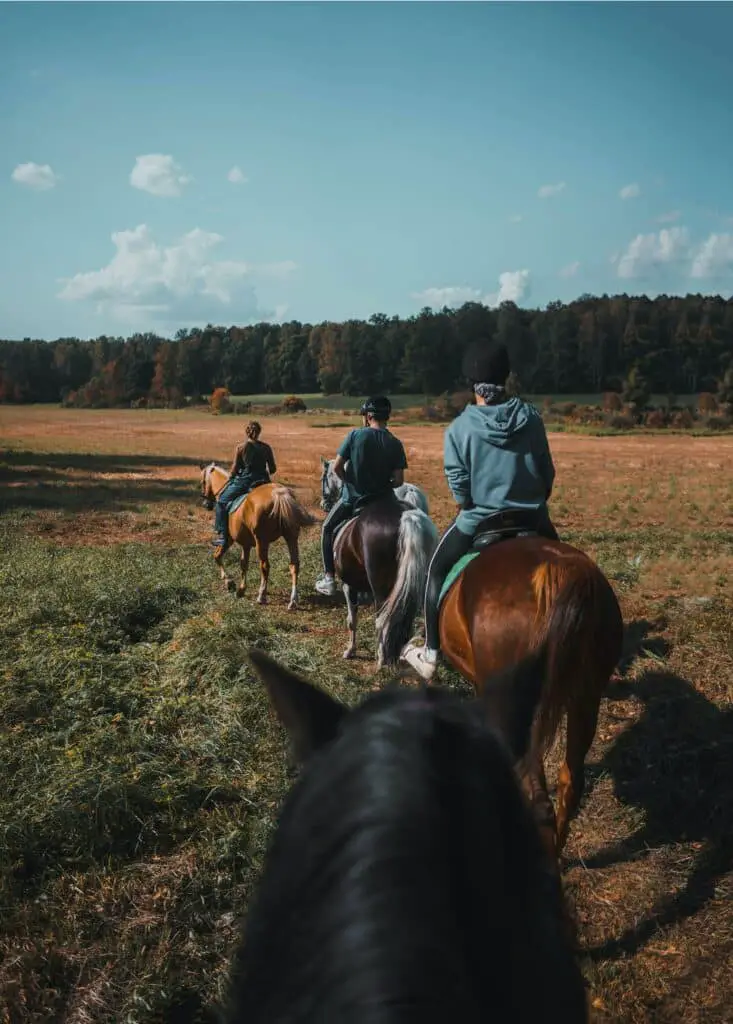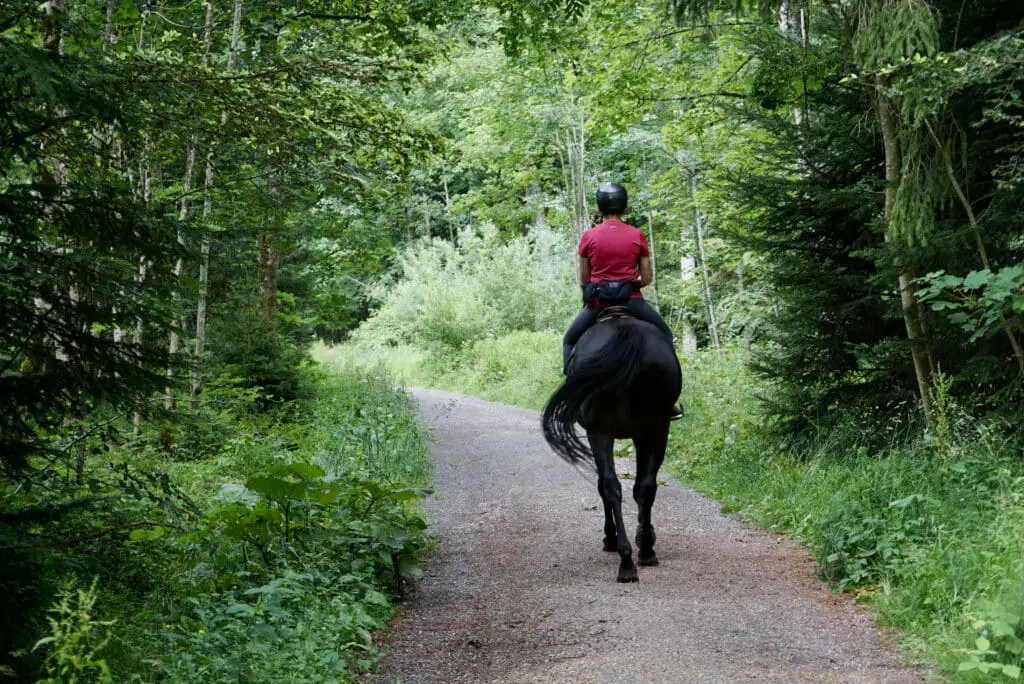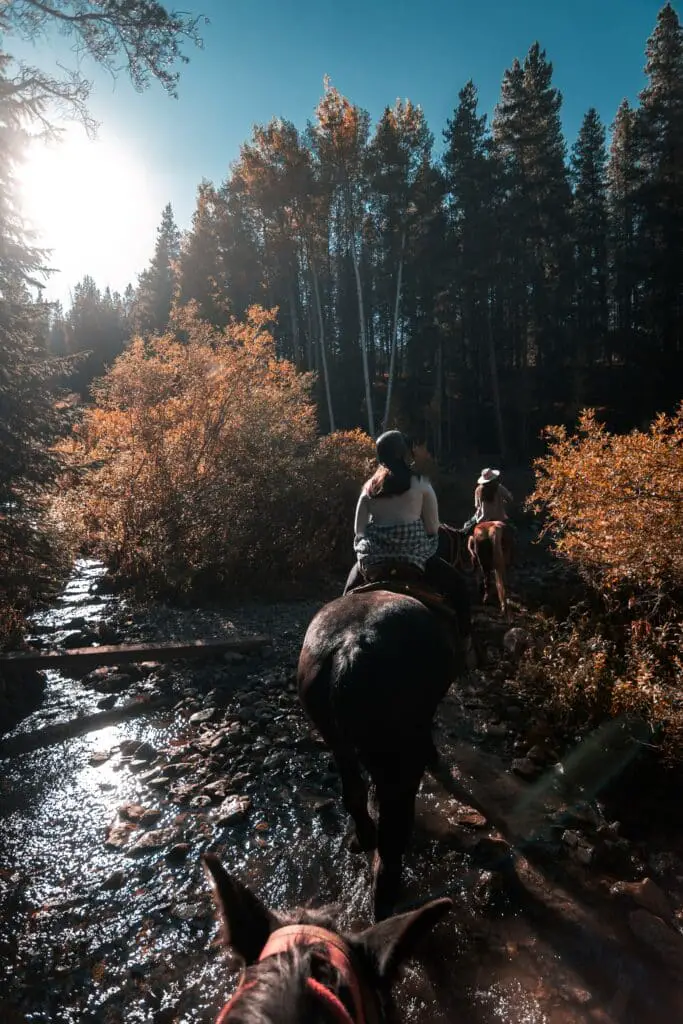I recently had a friend join me for a hack, and she was somewhat confused as to why we called it a hack. I had always grown up knowing riding out was called ‘hacking,’ and that a trail horse was commonly called a ‘hack.’ I honestly had never even thought twice about it until my friend asked!
So in this article, I’m going to talk about why these terms are used and where they came from.
What Is Hacking?
In horse riding, “hacking” is where the rider and horse ride out into the countryside for some light exercise. In the past, the horses used for this were those used for pulling carriages, which were primarily hackney horses. As a result, these “cheap” horses were used as lease ponies to ride around the countryside. This is where the term “hacking” comes from!
Today, hacking out is often a privilege that is reserved for those who have open spaces to ride away from the barn, stable, or riding school. The first hack can be quite intimidating to new riders who are challenged by new situations out on the trails or next to the road. Yet, a good hack can help riders to feel confident, and it can work wonders to boost their riding skills.
When out hacking, you and your horse get to enjoy nature, whether you are taking a leisurely ride or cantering along at speed. To enjoy your hacking experience, you will need a suitable saddle, and some great company is always a good idea. When riding, your aim should be to stay safe, so make sure someone knows where you are riding in case something happens on the trail.
If it is your first hack out, you should take an experienced friend with you. This person should know how to navigate narrow tracks. It’s a good idea to keep your first hack restricted to safe, open spaces that offer hard ground. By being safe and planning ahead, you can really enjoy your ride!
Hacking Out With Friends

So, you’re ready to take your first hack in the open countryside. When I take friends out riding, I usually start by checking how experienced the other riders are. If they can ride with confidence, do walk-trot transitions, canter, steer, and stop without too much effort, we can hit the trails!
What I don’t want to do is take that first canter, only to realize the riders aren’t able to sit well or balance concentration with a correct seat. It’s usually at this point that I realize these riders who “have been riding since they were kids” are actually not holding the reins correctly at all, or they show a lack of hand coordination and have trouble walking a horse, much less trotting steadily!
As the hack leader, it’s your responsibility to ensure everyone can tackle the outride with confidence as they ride around the countryside. So, before you head out, make sure everyone has the right saddle for the ride, that each animal is injury-free, and that you can help riders who seem afraid or uncertain.
Hacking Best Practices
Firstly, I choose my riding spaces carefully, and I diligently check all equipment and match riders with a horse or pony that is suitable for hacking. (Depending on the size of the rider, sometimes a pony is better at rough terrain since narrow tracks can challenge a taller horse’s balance.) Some riding spaces barely allow the pony’s width to pass between barriers and the road.
When riding out in a group, it is important to remain calm, stay alert, control your horse, and keep the animal calm. This is an achievable goal when you are a rider with confidence, but for new and inexperienced riders, it can be a challenge. Therefore, I choose my hacking terrain carefully by checking the lay of the land, opting for fairly hard ground where horses are less likely to slip or slide so everyone can stay safe.
Steering a horse through rough terrain can be a challenge, but when the rider succeeds, it gives them such confidence. Hacking offers many great advantages that will change your life for the better.
Benefits of Hacking

Hacking offers many benefits to a person, such as learning more about riding and riding with confidence. Whether you are riding at a canter or taking a walk, horse riding offers many great advantages:
- Riding helps you to not be afraid of the unknown or of open spaces
- Improves leg strength with a good rising trot
- De-stresses with the light exercise outside the stable or riding school
- Develops a reasonable balance and correct seat
- Physical benefits like stamina, coordination, weight loss, and overall muscle tone
Hacking Vs. Trail Riding (What’s the Difference?)
You may wonder what the difference is between trail riding and hacking. Hacking is when you ride your horse for pleasure along a road or in your area, while trail riding is a bit more involved. To do trail riding, you would usually take a saddle bag with supplies, and you may ride from one place to another, possibly camping out somewhere. Trail riding is usually done away from home.
A hack is usually a quick ride out in your area for an hour at most, while a trail ride can be a whole day ride with rest stops in between. Trail riders may spend as much as eight hours in the saddle on a day.
How to Have a Safe Hacking Experience

One of the things I really don’t like about some riding groups is when everyone rushes off into unknown terrain, forgetting the simple golden rule of a safe hacking experience: you go at the speed of the slowest rider. Your hacking ride should be safe and use ordinary speeds to accommodate a less experienced rider, while an experienced friend who can manage rough terrain can also keep up without any worries.
A good rising trot is an excellent pace to handle when hacking out. The more experienced rider can switch over to a lope or canter at the speed of a rising trot, which will make the ride interesting, yet keep everyone’s horse going at the same pace. The first hack should defintiely not be a race!
Be sure to share a few more golden rules about hacking out in a large group with all the riders who are with you:
- Keep a horse’s length between all horses and riders to avoid bunching and kicking
- If applicable, attach tags to the horses’ tails to indicate which horses kick
- Act responsibly in new situations
- When coming home, use a slower pace to avoid runaway horses
- Canter away from home; walk back when coming home
Hacking FAQs
Is hacking good for horses?
Yes, hacking can be great for horses and humans alike! It can make for some good exercise for both horse and rider by working muscles and expanding skills without a lot of pressure.
How long can you hack a horse for?
A hack is usually a quick ride—an hour at most. Once you’re riding for over an hour, you’re getting into what’s typically referred to as trail riding.
Why is riding out called hacking?
The term “hacking” dates back to when carriage horses were used for riding. The type of horse that was most commonly used was a hackney horse, also called “hacks.” This is where the term “hacking” a horse comes from!
Final Thoughts About Hacking
Hacking is loads of fun, but as a rider, you should always be responsible for your companions and your horse too. Your horse needs to be trained to hack out peacefully, no matter where you are riding.
Have fun, but stay alert so you can keep you and your pony safe. Happy hacking!

